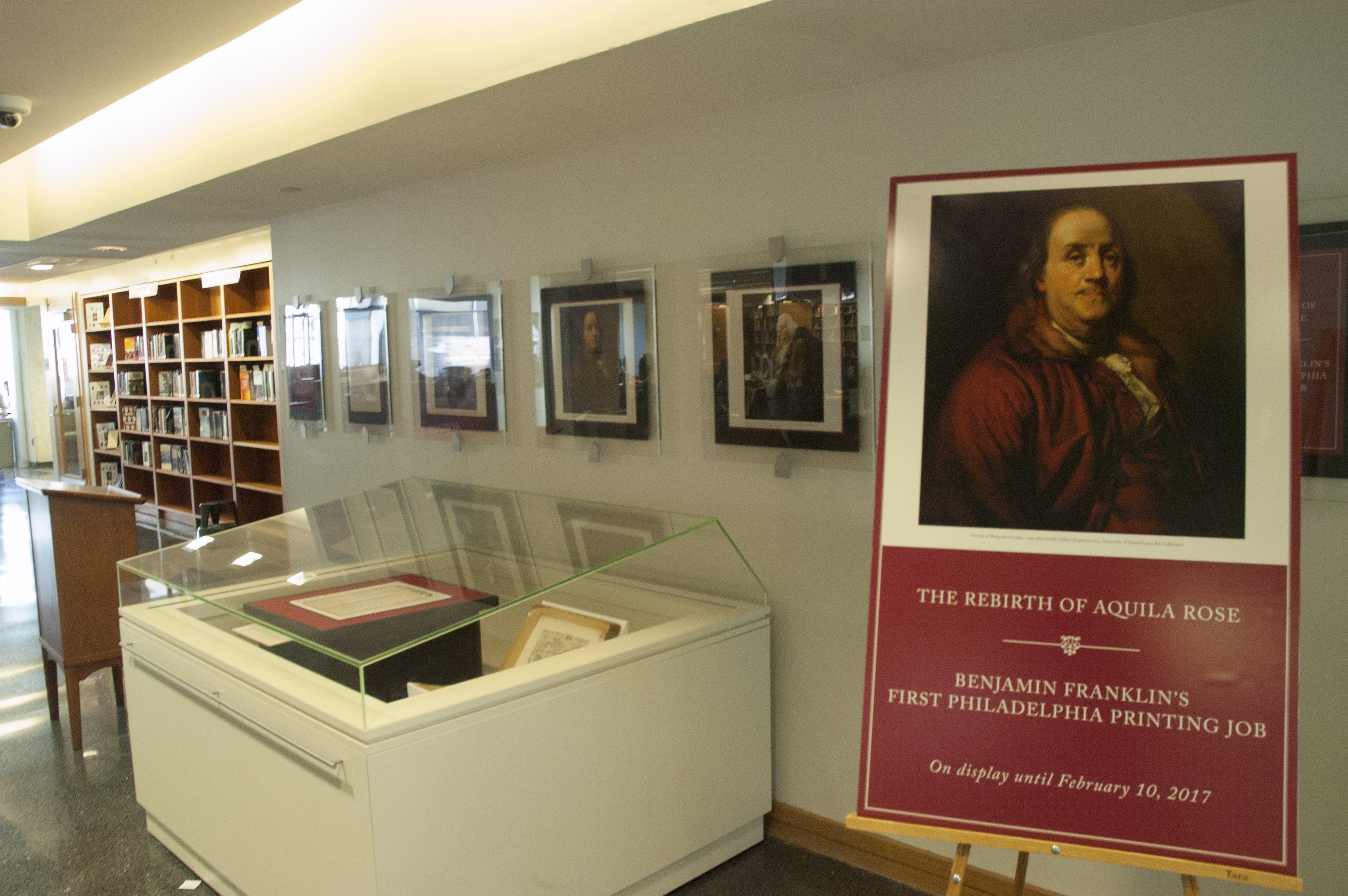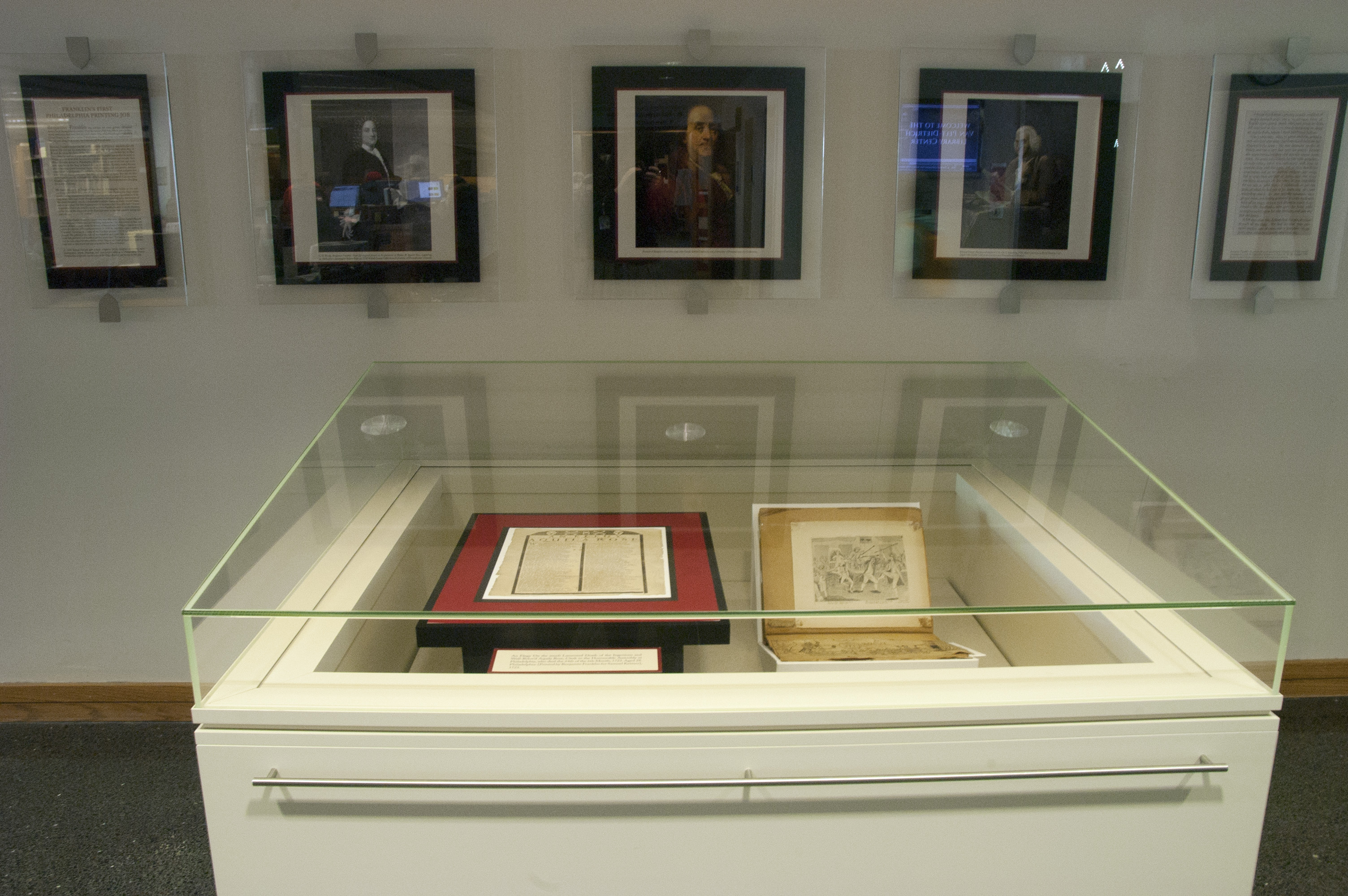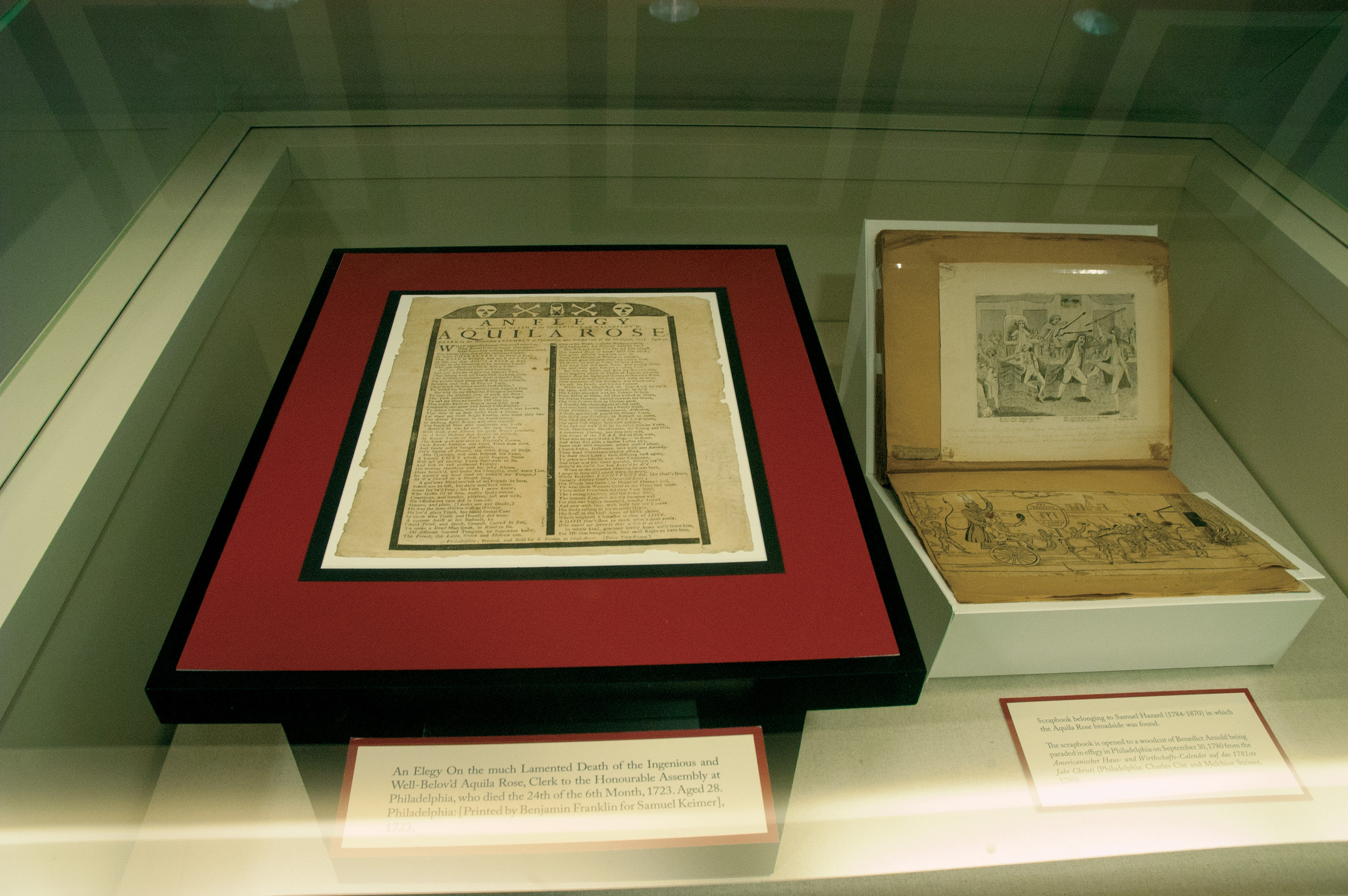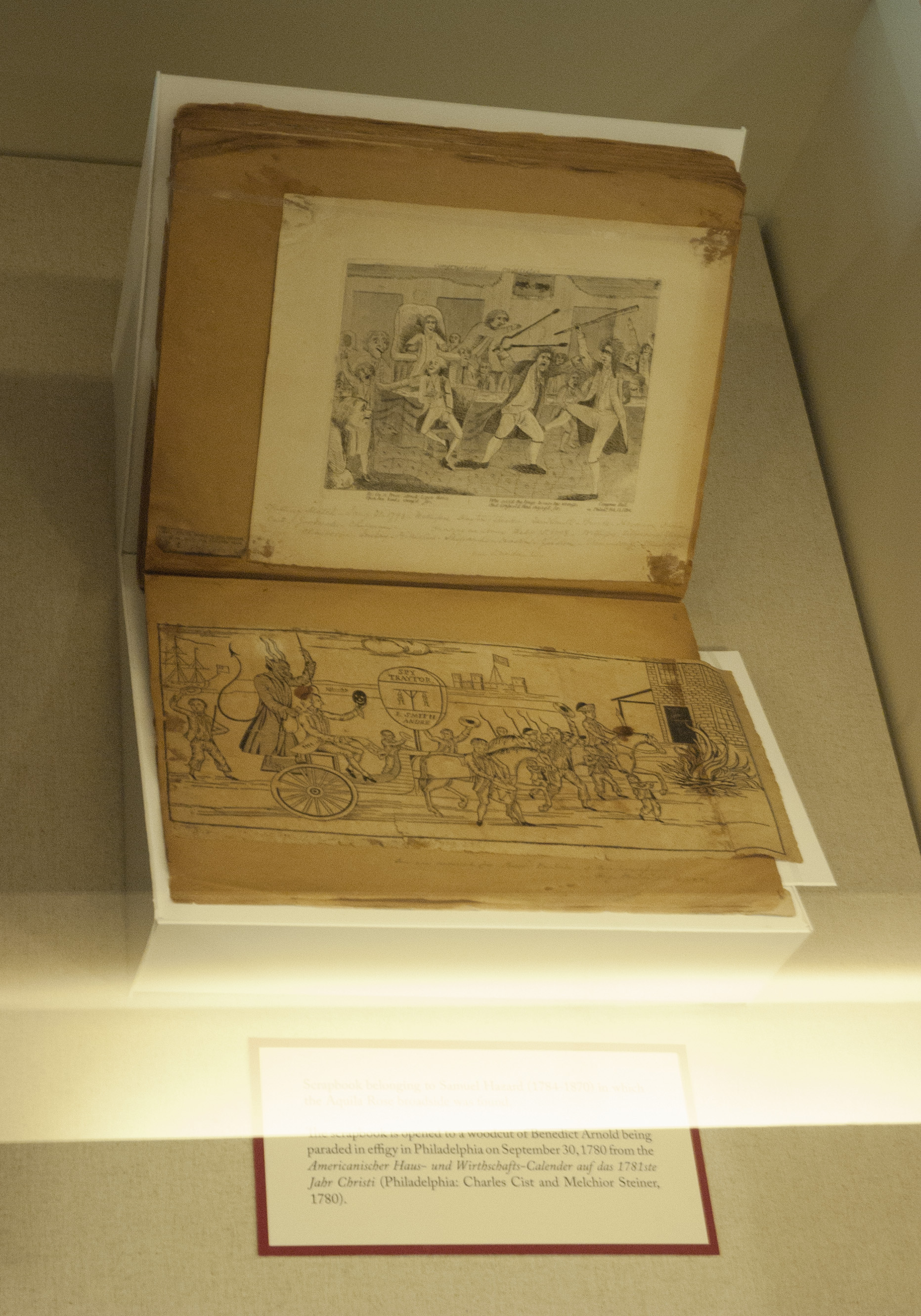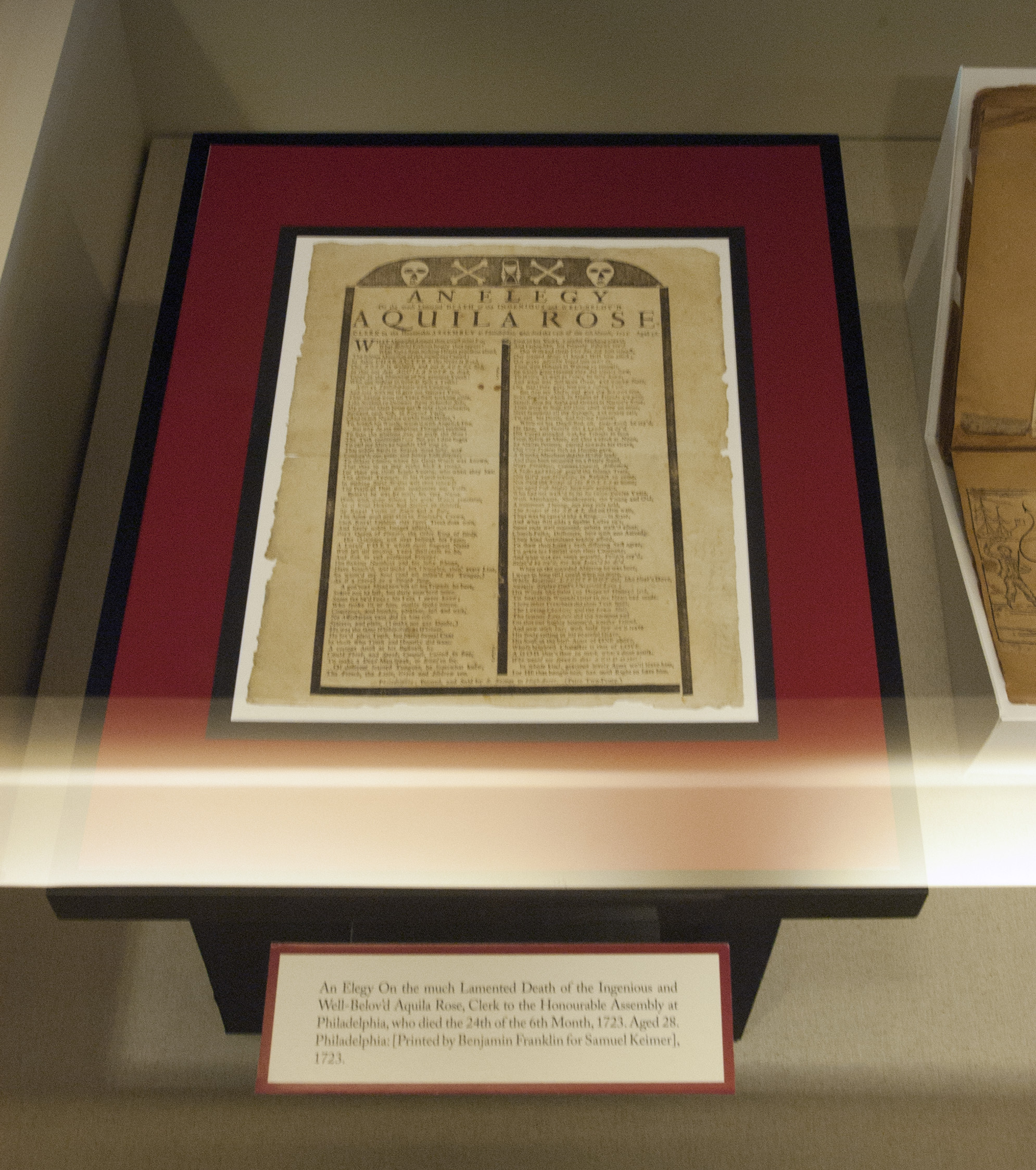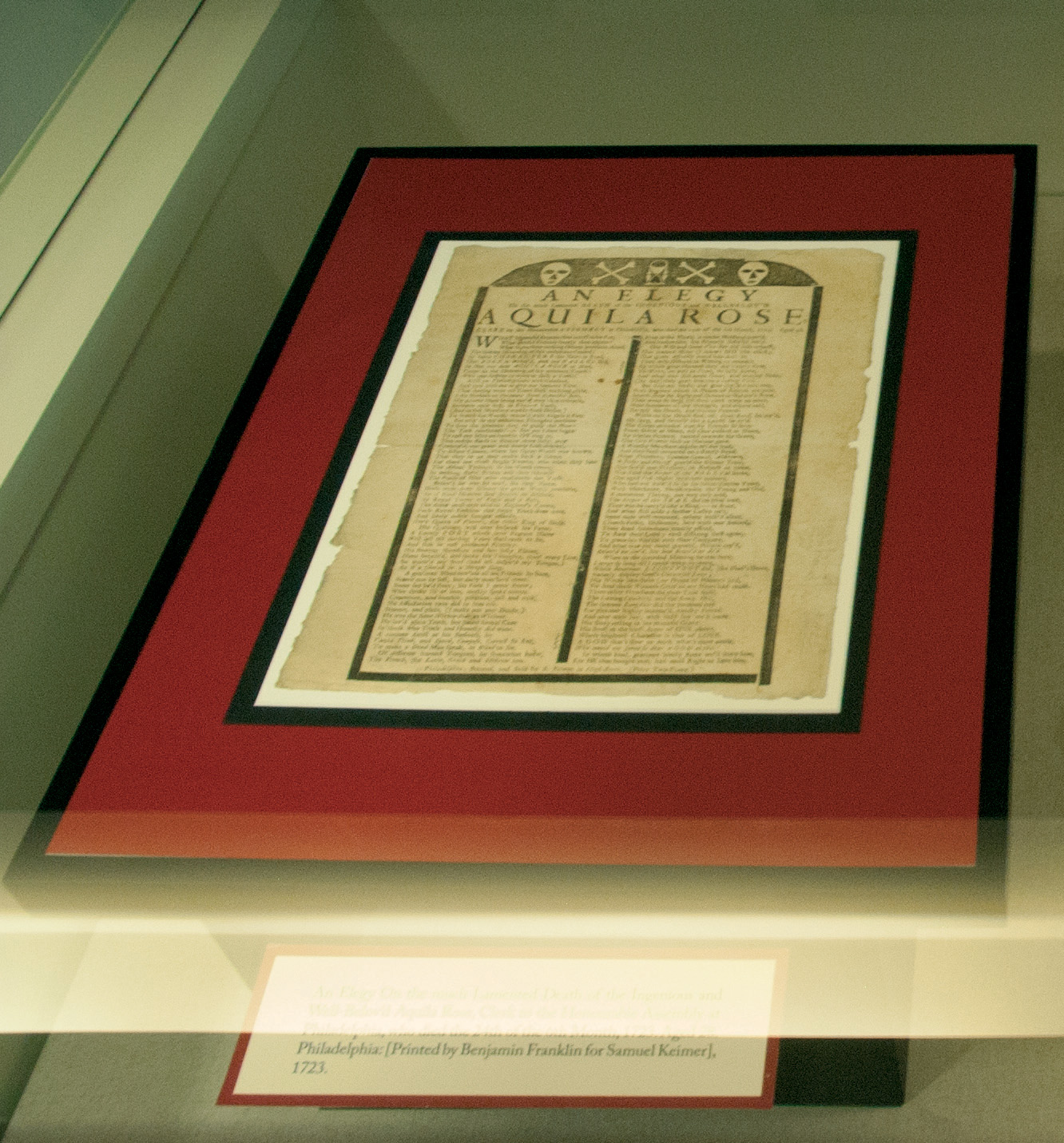![An Elegy On the much Lamented Death of the Ingenious and Well-Belov'd Aquila Rose, Clerk to the Honourable Assembly at Philadelphia, who died the 24th of the 6th Month, 1723. Aged 28. Philadelphia: [Printed by Benjamin Franklin for Samuel Keimer], 1723. University of Pennsylvania Libraries collection.](/sites/default/files/2019-05/aquilarose_300_0.jpg)
Benjamin Franklin was perhaps the most globally influential American of the eighteenth century. Over the course of his long life he was a printer, writer, statesman, diplomat, inventor, and scholar. One of the Founding Fathers of the United States he was also a great Philadelphian, founding over half a dozen civic institutions in the city including what is now the University of Pennsylvania. However, Franklin started his life in Philadelphia in 1723 as a seventeen year old fugitive. He had just run away from an apprenticeship at his brother's print shop in Boston, breaking the terms of his indenture and the law. Fleeing first to New York, Franklin applied at a printer there who suggested instead that he travel to Philadelphia to work with his son, also a printer, whose assistant had recently died. When Franklin arrived in Philadelphia, the New York printer took him not to his sons' but to the shop of Samuel Keimer. At the time Franklin visited, Keimer was composing a piece honoring Aquila Rose, the young poet and printer's assistant whose death helped prompt Franklin's trip. Keimer asked him to return and print this piece himself shortly thereafter. This Elegy on the Death of Aquila Rose was the first work Franklin printed in Philadelphia. If he had not been successful in its execution, Franklin might well have moved on from Philadelphia without employment, changing the course of history.
We know the story of Franklin's first days in Philadelphia thanks to his own autobiography which he compiled some sixty years later. Printing the Elegy clearly made a lasting impression on him as he mentions few other printing endeavors in his long career with such detail. Though not noted in his autobiography, examination of the actual broadside reveals a remarkable headpiece featuring skulls, crossed bones, and an hour glass. The New England style of decoration and its quality have led some to speculate that it was actually carved by young Franklin himself. Until the discovery of the copy of the Elegy now at the Penn Libraries, no one had reported seeing one since the mid-nineteenth century.
![An Elegy On the much Lamented Death of the Ingenious and Well-Belov'd Aquila Rose, Clerk to the Honourable Assembly at Philadelphia, who died the 24th of the 6th Month, 1723. Aged 28. Philadelphia: [Printed by Benjamin Franklin for Samuel Keimer], 1723. University of Pennsylvania Libraries collection.](/sites/default/files/2019-05/aquilarose_300.jpg)
